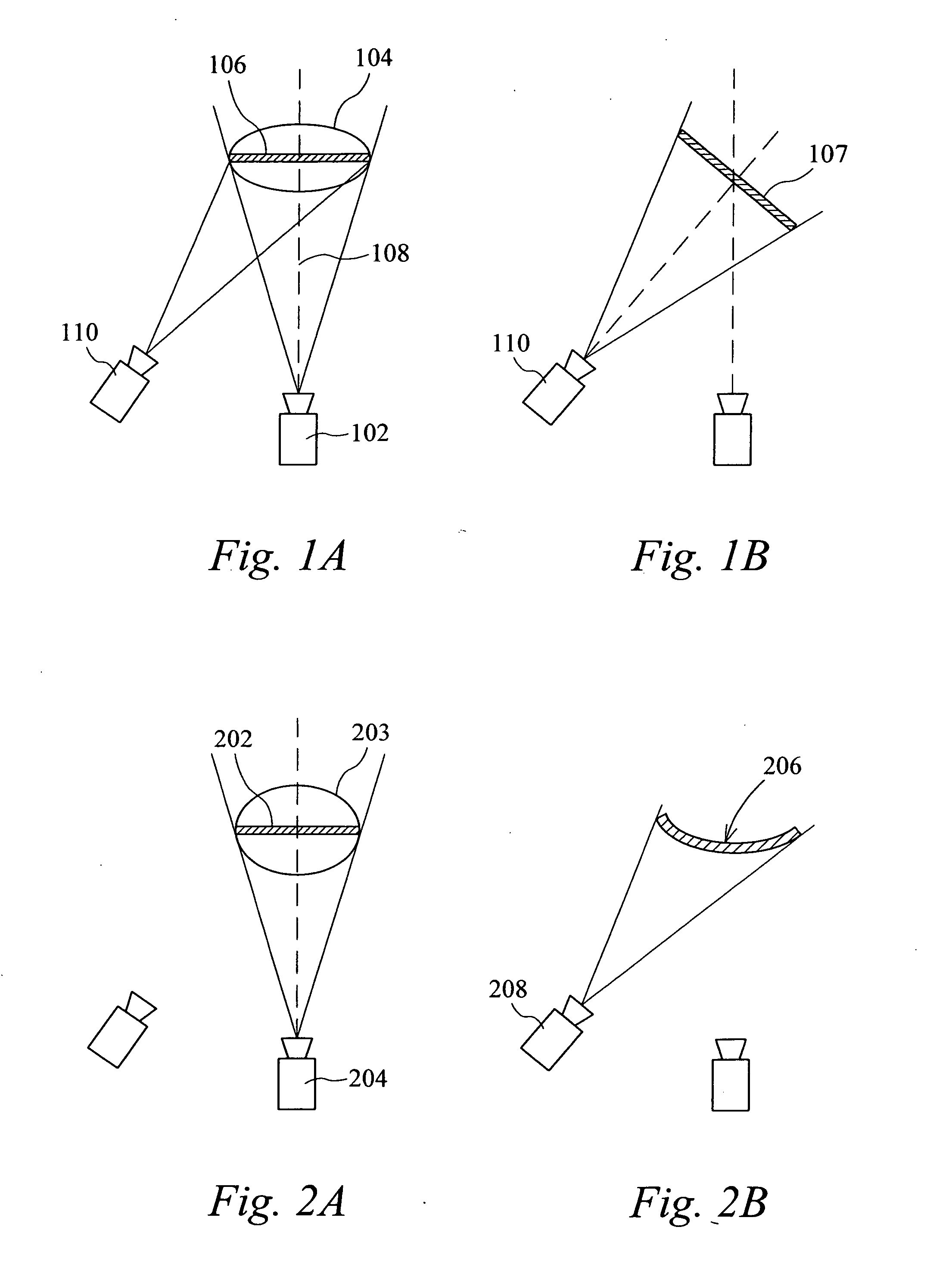Video processing
- Summary
- Abstract
- Description
- Claims
- Application Information
AI Technical Summary
Benefits of technology
Problems solved by technology
Method used
Image
Examples
Embodiment Construction
[0087] It can be seen in FIG. 1a that using a single real camera 102 we can model a selected object 104 most simply as a 2-D plane 106 at right angles to the real camera axis 108. The images from the real camera are rendered as a flat texture from the position of the virtual camera 110. An observer at the virtual view point sees the virtual object as a “cardboard cut-out”. This approach works reasonably well when the difference between the real and virtual camera angles is up to about 30 degrees, beyond which the distortion becomes too apparent.
[0088] A variation of the 2-D approach is illustrated in FIG. 1b, in which the planes modelling selected objects are rotated to a suitable angle 107. In some situations this may give a better virtual view, for example where the angle of view of the main camera is relatively narrow (otherwise the 2-D image will not have enough horizontal resolution), and the 2-D image is approximately perpendicular to the virtual camera 110.
[0089] A “2½-D” a...
PUM
 Login to View More
Login to View More Abstract
Description
Claims
Application Information
 Login to View More
Login to View More - R&D
- Intellectual Property
- Life Sciences
- Materials
- Tech Scout
- Unparalleled Data Quality
- Higher Quality Content
- 60% Fewer Hallucinations
Browse by: Latest US Patents, China's latest patents, Technical Efficacy Thesaurus, Application Domain, Technology Topic, Popular Technical Reports.
© 2025 PatSnap. All rights reserved.Legal|Privacy policy|Modern Slavery Act Transparency Statement|Sitemap|About US| Contact US: help@patsnap.com



